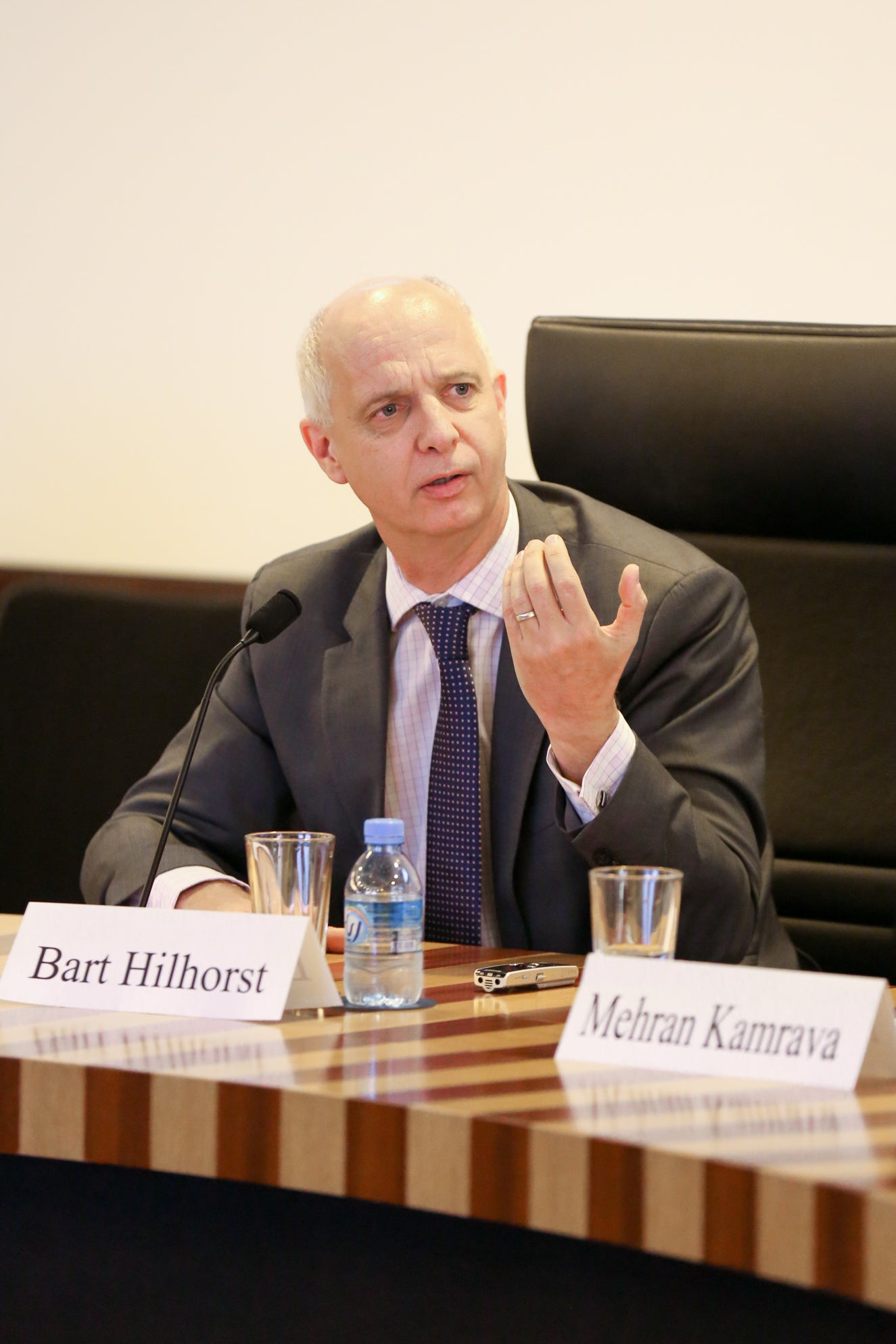Dialogue Series, Environmental Studies, Regional Studies
The Future of Nile Cooperation

Bart Hilhorst, a water resources specialist and former Chief Technical Advisor for the FAO project on the Nile basin, delivered a CIRS Focused Discussion on “The Future of Nile Cooperation” on March 25, 2015. The lecture centered on the complexities of water cooperation, with a focus on the Nile Basin. Hilhorst introduced the audience to these intricate issues by explaining that “water resources management is not a technical issue. Rather, quintessentially, it is a political issue. It determines who gets what and when.”
Since competition over scarce water resources is increasing at local, national, and regional levels, Hilhorst argued that “we need better tools to deal with these difficult, complex, and emotive issues of water resources management.” One of the tools he recommended was the “scenario approach,” which is a methodology that develops internally consistent and equally plausible stories that describe how the future might unfold. Hilhorst explained that “scenario thinking” is not to predict or to forecast. Rather, by examining the main driving forces in the external environment, there is a gradual understanding of what is driving the “system” and the underlying structural relations. This understanding is critical for making informed decisions. Importantly, scenario thinking takes a “big picture” approach to water resources management by encompassing the various stakeholders and their needs. Since regional water management often results in polarized perspectives, this approach helps to achieve an alignment of views between the various stakeholders, and to establish a common ground from which negotiations can emerge.
Hilhorst elaborated upon the application of scenario thinking to Nile cooperation among the eleven countries that share this valuable, yet somewhat scarce, water resource. “The Nile is a big name, and a long river, but it is a small river in terms of volume of runoff relative to the size of its basin,” he said. The countries through which the Nile flows have a number of developmental issues, including high demographic growth rates, poor infrastructure, and dependency on the Nile waters for most of their water and agricultural needs. Without effective north-south transport connections, there is little that links the eleven states as a group other than the Nile itself. Hence, direct common interests among the riparians are limited.
In order to address some of these overarching development issues, concerted efforts are ongoing to strengthen cooperation among the Nile riparians, including the “Nile Basin Initiative” that was established in 1999. At this point in time, however, the shape and dynamics of Nile cooperation are subject to a number of uncertainties. Will the international donor community continue its current level of support to the regional Nile Basin Initiative (NBI) centers? Can financing be mobilized for the large infrastructure investment projects that will increase the benefits accrued from the Nile waters? When can the NBI centers advance from transitional to permanent status? Will Egypt re-engage in the Nile discussions? It is especially within such dynamic and uncertain environments that scenario thinking thrives in its offering of possible solutions for plausible outcomes. In September of 2014, Hilhorst conducted a scenario exercise with a committee made up of key stakeholders including members of the Nile Technical Advisory Committee as well as representatives from both government and civil society groups.
Hilhorst concluded by highlighting the increasing man-made influences upon the Nile. He explained that, currently, “the Nile is transferring from a natural to a regulated river,” where various water management infrastructures and dams are being established along the length of the river in national attempts to benefit from its flow. Most of these projects are aligned to national development programs, and do not necessarily take into account the regional perspective. Yet, because many of these projects have increased the flood control, hydropower, and irrigation optionality of Nile resource management, they have created a situation wherein “the potential benefits of cooperation has increased dramatically,” for the entire Nile Basin. This, in turn, has sparked the need for increased regional cooperation, and so is a positive drive towards future integration between the nations of the Nile.
Bart Hilhorst has over twenty-five years of experience in land and water resources management, with a focus on transboundary rivers and forward thinking in natural resources development and use. He has extensive field experience in complex transboundary water projects in Africa and Asia, and served as a Chief Technical Advisor for FAO project “Information Products for Nile Basin Water Resources Management.” Hilhorst has particular knowledge of using scenario thinking to support strategy formulation for natural resources management, and to facilitate dialogue processes regarding complex water allocation challenges. He recently facilitated a comprehensive multi-stakeholder scenario process that investigated the complex water-agriculture-energy sector in the Aral Sea basin, and is currently involved in a scenario project on the ‘future of Nile cooperation’ for the Nile Basin Initiative. In February 2015 Bart Hilhorst completed a study on the status of GCC agro-investments in sub-Saharan Africa.
Article by Suzi Mirgani, Manager and Editor for CIRS Publications